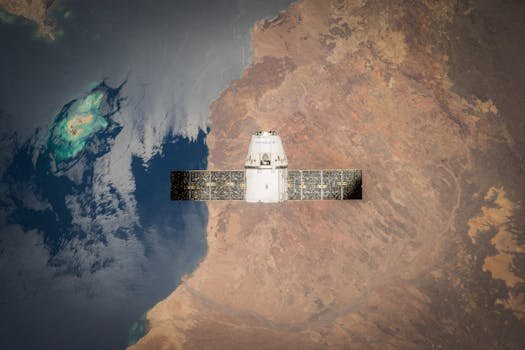
Satellite: Exploring the History of Satellite Development and Key Milestones
Satellite development has come a long way since the launch of the first artificial satellite, Sputnik 1, in 1957. The history of satellite development is a rich and fascinating one, with numerous key milestones that have shaped the industry into what it is today. In this article, we will delve into the history of satellite development, highlighting the major achievements and innovations that have propelled the industry forward.
Early Beginnings: The First Satellites

The concept of satellites dates back to the early 20th century, when scientists and engineers began exploring the idea of launching objects into space. The first artificial satellite, Sputnik 1, was launched by the Soviet Union on October 4, 1957. This small, beach-ball-sized satellite weighed about 83 kg and carried a simple radio transmitter that emitted a continuous beep signal. The successful launch of Sputnik 1 marked the beginning of the space age and sparked a global interest in space exploration.
The Space Race and the Development of Satellite Technology

The launch of Sputnik 1 triggered a space race between the United States and the Soviet Union, with both countries competing to achieve milestones in space exploration. The United States responded to Sputnik 1 with the launch of Explorer 1, its first successful satellite, on January 31, 1958. The early years of satellite development were marked by rapid advancements in technology, including the development of more powerful rockets, improved communication systems, and the creation of new materials and technologies.
Key Milestones in Satellite Development

Over the years, there have been numerous key milestones in satellite development that have shaped the industry. Some of the most significant milestones include:
- The launch of the first commercial communications satellite, Intelsat 1, in 1965, which marked the beginning of the satellite communications industry.
- The launch of the first GPS satellite, NAVSTAR 1, in 1978, which paved the way for the development of modern navigation systems.
- The launch of the Hubble Space Telescope in 1990, which has revolutionized our understanding of the universe and has made numerous groundbreaking discoveries.
- The launch of the first satellite constellation, Iridium, in 1998, which provided global satellite phone coverage and marked a new era in satellite communications.
Modern Satellite Development and Future Directions

Today, satellite development continues to evolve, with new technologies and innovations being developed at a rapid pace. Some of the current trends and future directions in satellite development include:
- The development of small satellites, also known as CubeSats, which are smaller, cheaper, and more agile than traditional satellites.
- The use of satellite constellations, such as OneWeb and Starlink, which aim to provide global satellite internet coverage and other services.
- The development of advanced propulsion systems, such as electric propulsion, which offer greater efficiency and flexibility for satellite missions.
- The use of satellites for Earth observation and remote sensing, which has numerous applications in fields such as climate change, natural resource management, and disaster response.
Conclusion

In conclusion, the history of satellite development is a rich and fascinating one, marked by numerous key milestones and innovations that have shaped the industry into what it is today. From the launch of the first artificial satellite, Sputnik 1, to the current advancements in small satellites, satellite constellations, and advanced propulsion systems, the satellite industry continues to evolve and expand. As we look to the future, it is clear that satellites will play an increasingly important role in shaping our world and addressing some of the most pressing challenges we face.
